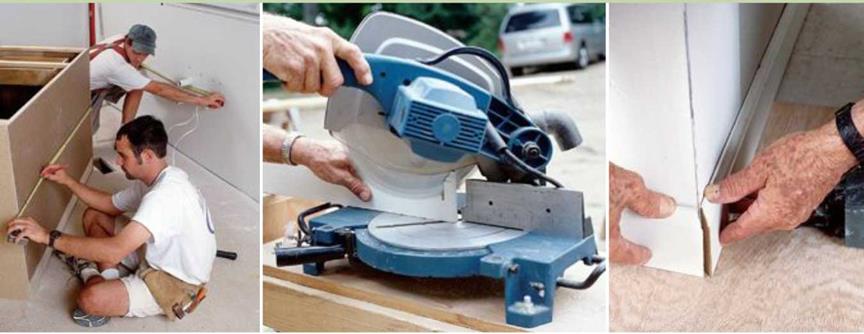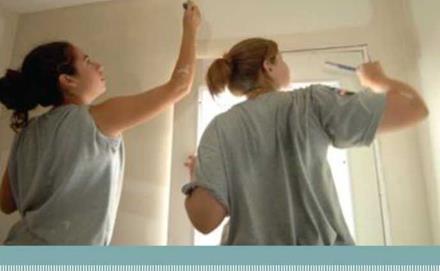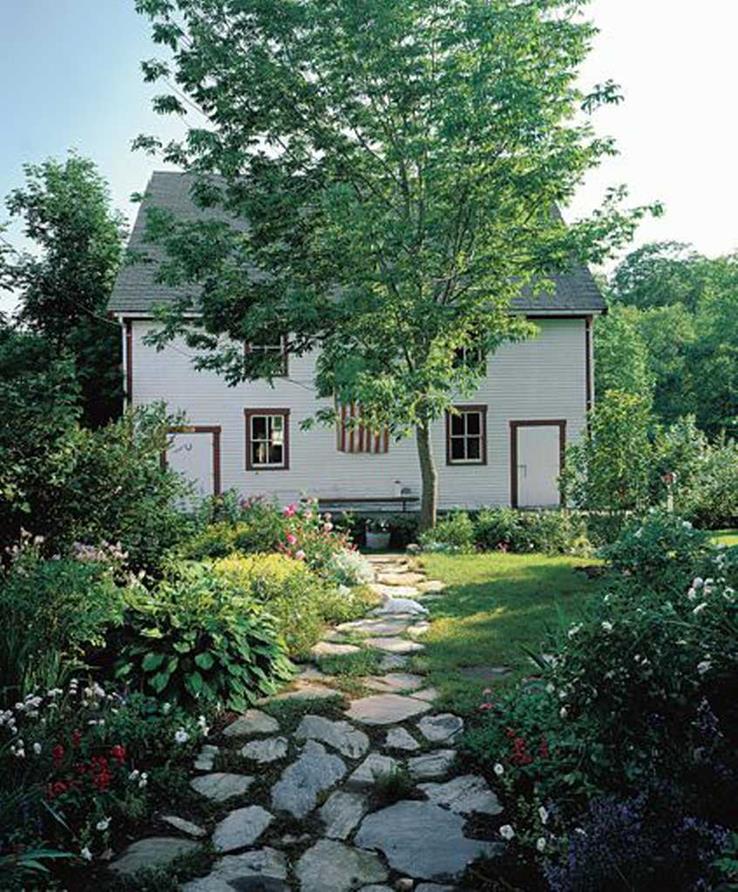Add smaller shelves to a closet
Rather than always running a shelf pole all the way across a closet, you can shorten the pole and add a column of shelves at one end, as shown in the illustration on p. 263. With this design, you can make a typical 6-ft. closet much more useful for storing all kinds of clothes, including shoes. Cut the 1×12 divider 76 in. long, lay out the shelf locations, then attach 1×2 shelf-support cleats to the divider.
I usually place the two lowest shelves 8 in. and 16 in. off the floor for shoes. For socks and underclothes, I place a shelf every 12 in. above the first two. Fasten corresponding cleats to the side of the closet wall where the shelves will be installed.
INSTALLING A BASIC SHELF AND
POLE IN A CLOSET
![Add smaller shelves to a closet Подпись: The inside of a closet can be arranged to hold much more than clothes on hangers. A bank of shelves can eliminate the need for a chest of drawers. [Photo by Don Charles Blom]](/img/1312/image839.gif)
This allows you to adjust the height of shelves, just as in a kitchen cabinet.
On the pole side of the divider, put a few hooks to hang belts. On the cleat holding the shelf on the other end, install a hook or two to hold clothes you don’t want to put on a hanger. Now you have a much more usable closet with little added expense or labor.
Trim out a closet with coated-wire shelving
The rubberized wire shelving found at home centers offers many accessories to help organize a clothes closet. The wire frames are strong and open, and you don’t have to paint them (see the photo on p. 265). Besides the traditional shelf – and-pole setup, you can install baskets, drawers, and tie, belt, and shoe racks. The possibilities for arranging your closets with these components are really endless. The only drawback is that they’re more expensive than building simple storage spaces with wood.
I haven’t installed a lot of this type of shelving, but it isn’t difficult. The instructions that come with the components are easy to follow. Just be sure to make accurate measurements so the shelving is installed straight and level. Some people put backing in the wall frame before drywall is installed so the hooks that hold


Bringing pipes and electrical wire through the back of a Cutting exact angles is easy when you have a chopsaw.
base cabinet calls for careful measurements. A tight-fitting miter really looks nice.
We tackle the baseboard trim after all the cabinets have been installed.



the wire units can be screwed into solid wood. Otherwise, you can screw the hooks into studs and use the drywall anchors that come with the shelving units in places where you need support but don’t have a stud.
Install shelves in linen closets and the laundry room
A complaint I hear from many homeowners is that they just don’t have enough places to store their belongings. Certainly, most of us could stand to reduce the clutter in our lives, but adequate storage space is in short supply in small, affordable houses. For that reason, it makes sense to get the most out of whatever storage space you do have.
Just as in a clothes closet, you can do a lot with a linen closet by building shelving like that shown in the illustration on p. 263. I like to install the first shelf at 18 in. to 20 in. off the floor, then place shelves every 12 in. to 16 in. up from there. Use 1 x2 cleats on each side of the closet, and attach the shelving to the cleats.
Take advantage of all the space in a linen closet (usually around 24 in.) by using full-depth shelves. Melamine shelving is available in various standard widths up to 24 in., or you can buy 4-ft. by 8-ft. sheets of the material and cut it to the desired width.
Laundry rooms are often just large enough to hold a washer and dryer. Few affordable houses have a large utility room with space for lots of shelves. In a small laundry room, I install a couple of shelves over the washer and dryer for items such as soap and bleach.
I install the first shelf at 5 ft. off the floor and another one above the first. Or you can buy a simple wall cabinet and attach it to the wall.
Another strategy to consider is using built-ins to gain space. Most home centers sell an ironing board in a cabinet that fits neatly between two wall studs. You may want to build a bookcase that fits into the wall. I often like to build a small box with a shelf to place in walls here and there. This provides a place for a vase with flowers or other knickknacks.
|
|







Leave a reply